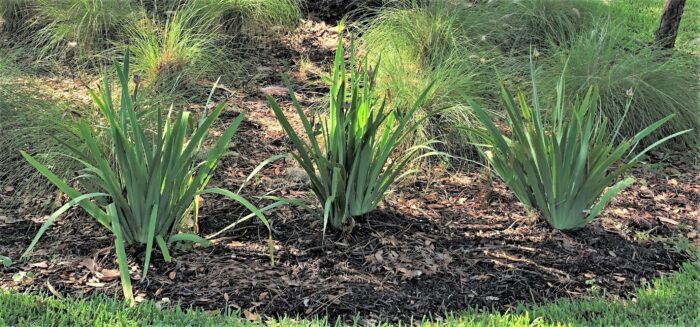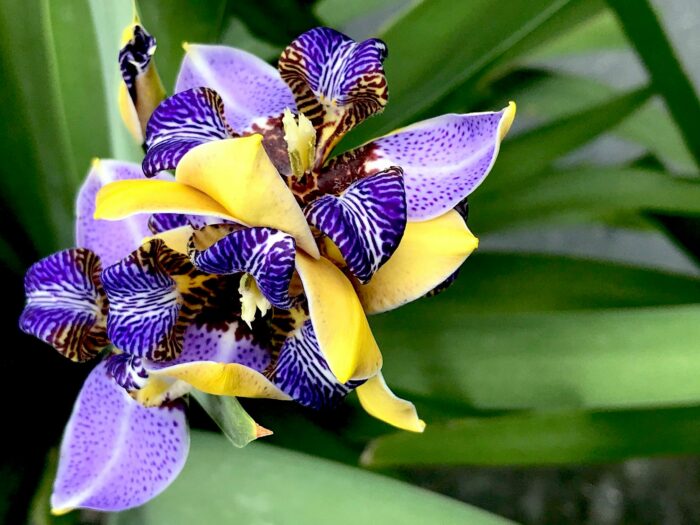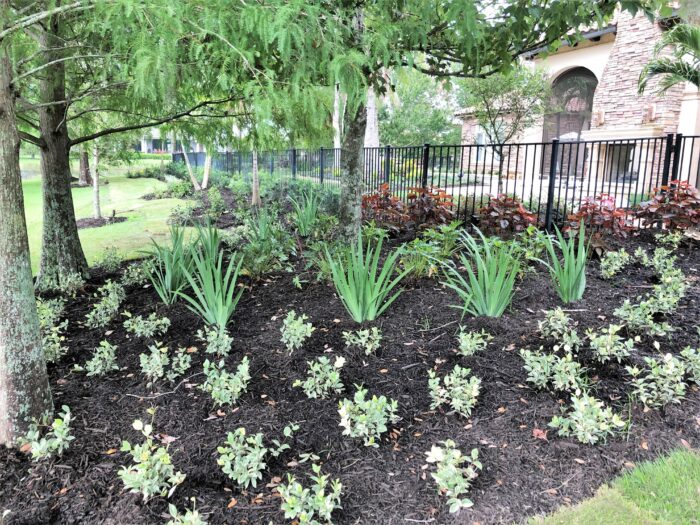Giant Apostle’s Iris Challenges Sarasota Resident’s Faith
Giant Apostle’s Iris is celebrated for its magnificent purple flowers rippled with rich yellow and mahogany tones. But for one Sarasota homeowner, its magnificence didn’t exist — at least not at first.

“I was on a walk-through with a woman who wasn’t a full-time resident,” remembers Brian Clouser, a landscape designer for ArtisTree Landscape Maintenance & Design. “We were evaluating her newly installed plant material and she said something was wrong with some of her ‘grasses’ – that they had ‘these things’ growing out of the ends.
“When I explained they were Giant Apostle’s irises and that those ‘things’ were actually buds, she just kind of shook her head. But a week later she was a believer. She called and said they were the most exquisite flowers she had ever seen and was glad she didn’t pull them out.”
Moral of the story: Always have faith that Giant Apostle’s Iris will bloom.
Giant Apostle’s Iris impresses with or without blooms.


“I like Giant Apostle’s Iris because it provides a textural difference,” explains Clouser. “It has a wider blade that stays more upright than other ‘spikey’ plants. It works well under established canopy shade trees like oak and pines. You can use it for mass plantings, rock gardens, beds or borders. And it looks amazing even when it’s not blooming because of its bold symmetrical look.”
Why the name?
Story has it that Giant Apostle’s Iris is believed not to bloom until it produces 12 stalks, hence the name. But its more common name is walking iris because of its propagation habit. New plantlets form at the tops of flower stalks, eventually bending to the ground and rooting. “By repeating this process, these irises can fill in an area nicely,” says Clouser. “It’s one of the plant’s features that my clients like best.”
Caring for your Giant Apostle’s Iris
This evergreen perennial will grow up to four feet and thrives in full or partial shade. Though not native to Florida, it’s Florida friendly and does well in a variety of soils, especially in moist areas. Clouser says cold sensitivity might be an occasional issue but that it’s generally not a problem. “I’ve seen them rot sometimes, but that’s more from being planted too deep than overwatering. They’re drought and salt tolerant, too.”
If you’re interested in a repeat bloomer that virtually requires no care and pairs well with other “softer” plantings such as Copperleaf, Green Island Ficus or Variegated Confederate Jasmine, Giant Apostle’s Iris might be the perfect architectural plant to give your landscape some instant impact.

Contact ArtisTree at 941.488.8897; artistree.com.
Let ArtisTree help get your dream landscape off the ground. Contact Jenni Lassen at 941.488.8897, ext. 312, to meet with one of our award-winning landscape designers.
Live in an HOA community where the landscape is going downhill? Contact Mike Casper at 941.488.8897, ext. 321, to request a maintenance proposal and a tour of our properties located in Sarasota, Manatee and Charlotte counties.








